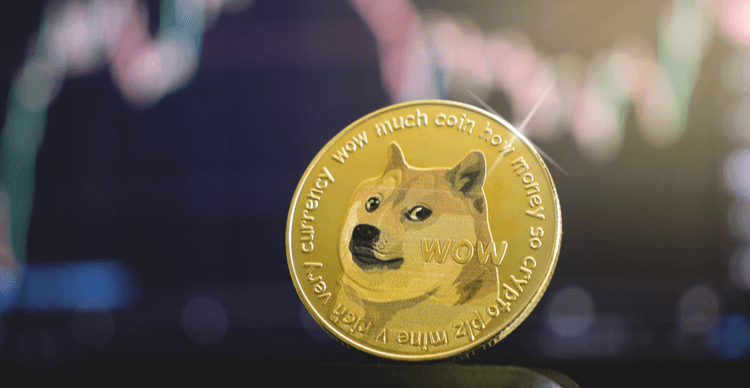Social media has revolutionized the way consumers interact with brands and make purchasing decisions. With billions of users across platforms like Facebook, Instagram, Twitter, and LinkedIn, social media’s influence on consumer behavior is profound and multifaceted. This guide explores six key ways social media impacts consumer behavior, providing insights into how businesses can leverage these dynamics to drive engagement, build brand loyalty, and increase sales.
1. Increased Brand Awareness
Social media platforms are powerful tools for increasing brand visibility and awareness. The reach and engagement capabilities of social media can significantly impact consumer perceptions and recognition of brands.
Wider Reach: Social media allows brands to reach a global audience with minimal cost. Platforms like Facebook and Instagram offer targeted advertising options that can help businesses connect with potential customers based on their interests, demographics, and online behavior.
Enhanced Visibility: Regular posting and interaction on social media keep a brand top-of-mind for consumers. Engaging content, such as eye-catching visuals, informative articles, and interactive posts, can boost brand visibility and recognition.
Viral Potential: Social media has the potential for viral content, where a single post can be shared widely, amplifying brand exposure. Successful viral campaigns can lead to significant increases in brand awareness and consumer interest.
2. Shaping Consumer Perceptions
Social media shapes how consumers perceive brands, products, and services. Through reviews, testimonials, and influencer endorsements, social media can significantly influence consumer attitudes and opinions.
User Reviews and Ratings: Platforms like Yelp and Google Reviews provide consumers with the ability to leave feedback and rate their experiences. Positive reviews can enhance a brand’s reputation, while negative reviews can deter potential customers.
Influencer Endorsements: Influencers and celebrities can sway their followers' opinions and purchasing decisions. Endorsements and collaborations with popular figures can lend credibility to a brand and generate interest among their audience.
Brand Messaging: Consistent and authentic messaging on social media helps shape consumer perceptions. Brands that share their values, mission, and behind-the-scenes content can build trust and foster positive perceptions among their audience.
3. Driving Purchase Decisions
Social media plays a crucial role in driving consumer purchase decisions. Platforms offer various features and tools that facilitate the discovery and consideration of products and services.
Shoppable Posts: Features like Instagram’s shoppable posts and Facebook’s Marketplace allow users to browse and purchase products directly from social media. This seamless shopping experience can lead to impulse buys and increased conversions.
Product Discovery: Social media platforms are often used for discovering new products and brands. Users may come across product recommendations from friends, influencers, or brand advertisements, which can influence their buying decisions.
Customer Reviews and Recommendations: Consumers often rely on social media for recommendations from peers and online communities. Positive recommendations and reviews can encourage users to make a purchase, while negative feedback can have the opposite effect.
4. Enhancing Customer Engagement
Social media provides a platform for brands to engage directly with their customers, fostering stronger relationships and enhancing customer satisfaction.
Real-Time Interaction: Brands can engage with customers in real-time through comments, direct messages, and live chats. Prompt responses to inquiries and feedback can improve customer satisfaction and loyalty.
User-Generated Content: Encouraging users to create and share content related to a brand, such as reviews, photos, or testimonials, can build a sense of community and authenticity. User-generated content can also serve as social proof and influence other consumers.
Interactive Campaigns: Social media allows for interactive campaigns, such as contests, polls, and quizzes, which can drive engagement and foster a sense of participation among users.
5. Personalized Marketing
Social media platforms offer advanced targeting and personalization options that can enhance marketing efforts and improve the relevance of advertisements.
Targeted Advertising: Social media platforms collect extensive data on user behavior, interests, and demographics. This data enables brands to create highly targeted ad campaigns that reach specific audience segments with personalized messages.
Behavioral Insights: Analyzing user behavior and engagement on social media provides valuable insights into consumer preferences and trends. Brands can use this data to tailor their content and marketing strategies to better meet the needs of their audience.
Retargeting: Social media retargeting allows brands to reach users who have previously interacted with their website or content. By showing relevant ads to these users, brands can increase the likelihood of conversion and drive repeat purchases.
6. Fostering Brand Loyalty
Social media helps build and maintain brand loyalty by creating a sense of community and fostering positive interactions with customers.
Community Building: Brands can create and nurture online communities where customers can connect, share experiences, and engage with the brand. A strong community can enhance brand loyalty and encourage repeat business.
Exclusive Offers and Rewards: Social media platforms are ideal for promoting exclusive offers, discounts, and rewards to loyal customers. Special promotions and incentives can strengthen customer loyalty and drive repeat purchases.
Personalized Engagement: Personalized interactions on social media, such as addressing customers by name and responding to their comments, can enhance the customer experience and build a stronger emotional connection with the brand.
Tools and Strategies for Leveraging Social Media Impact
To effectively leverage social media’s impact on consumer behavior, consider implementing the following tools and strategies:
Social Media Analytics Tools: Use tools like Google Analytics, Hootsuite, and Sprout Social to track and analyze social media performance, engagement metrics, and consumer behavior insights.
Social Listening Tools: Platforms such as Brandwatch and Mention can help monitor social media conversations and trends, providing valuable insights into consumer sentiment and brand perception.
Content Management Systems: Utilize content management systems (CMS) and scheduling tools to plan, create, and manage social media content efficiently. Tools like Buffer and CoSchedule can help streamline content posting and engagement.
Case Studies: Social Media’s Impact on Consumer Behavior
Case Study 1: Fashion Brand’s Instagram Success
- A fashion brand leveraged Instagram’s shoppable posts and influencer partnerships to drive significant increases in online sales. By creating visually appealing content and collaborating with fashion influencers, the brand enhanced product visibility and engagement.
Case Study 2: Restaurant’s Facebook Engagement
- A local restaurant used Facebook’s targeted advertising and interactive posts to boost customer engagement and drive traffic to their location. Promotions and customer interaction on Facebook led to increased reservations and repeat visits.
Case Study 3: Tech Company’s Twitter Campaign
- A technology company ran a Twitter campaign featuring user-generated content and real-time interactions. The campaign’s success in engaging customers and showcasing authentic experiences contributed to increased brand loyalty and positive sentiment.
Social media has a profound impact on consumer behavior, influencing brand awareness, perceptions, purchase decisions, engagement, and loyalty. By understanding and leveraging these effects, businesses can develop effective social media strategies that resonate with their audience and drive meaningful results. Embracing tools and strategies that enhance social media performance and engagement can help businesses capitalize on the opportunities presented by this dynamic and influential medium.
FAQ:
How does social media increase brand awareness?
- Social media increases brand awareness through its wide reach, engaging content, and viral potential. Brands can connect with a global audience and enhance visibility by regularly posting and interacting with users.
In what ways does social media shape consumer perceptions?
- Social media shapes consumer perceptions through user reviews, influencer endorsements, and brand messaging. Positive reviews and endorsements can enhance brand reputation, while negative feedback can impact consumer attitudes.
How does social media drive purchase decisions?
- Social media drives purchase decisions through shoppable posts, product discovery, and customer reviews. Users can directly purchase products, discover new items, and rely on recommendations from peers and influencers.
What are the benefits of real-time interaction on social media?
- Real-time interaction on social media improves customer satisfaction and loyalty by providing prompt responses to inquiries, addressing concerns, and engaging with users in a timely manner.
How can user-generated content impact consumer behavior?
- User-generated content serves as social proof and enhances authenticity. It builds trust and credibility, influencing other consumers’ perceptions and encouraging them to engage with the brand.
What is the role of personalized marketing in social media?
- Personalized marketing on social media involves targeted advertising and tailored content based on user behavior and interests. It improves the relevance of marketing efforts and increases the likelihood of conversions.
How can social media analytics tools help businesses?
- Social media analytics tools provide insights into performance metrics, engagement levels, and consumer behavior. These insights help businesses refine their strategies, measure success, and make data-driven decisions.
What are the advantages of using social listening tools?
- Social listening tools help monitor social media conversations and trends, providing valuable insights into consumer sentiment and brand perception. They enable businesses to stay informed and respond effectively to customer feedback.
How can content management systems streamline social media efforts?
- Content management systems and scheduling tools help businesses plan, create, and manage social media content efficiently. They ensure consistent posting, streamline content creation, and enhance overall social media management.
What are some successful examples of social media campaigns?
- Examples of successful social media campaigns include fashion brands using Instagram shoppable posts, restaurants leveraging Facebook for engagement, and tech companies running interactive Twitter campaigns. These campaigns demonstrate the effective use of social media to drive brand visibility, engagement, and sales.
By understanding and harnessing the power of social media, businesses can effectively influence consumer behavior and achieve their marketing objectives.
Get in Touch
Website – https://www.webinfomatrix.com
Mobile - +91 9212306116
Whatsapp – https://call.whatsapp.com/voice/9rqVJyqSNMhpdFkKPZGYKj
Skype – shalabh.mishra
Telegram – shalabhmishra
Email - info@webinfomatrix.com

.jpg)







 English (US) ·
English (US) ·